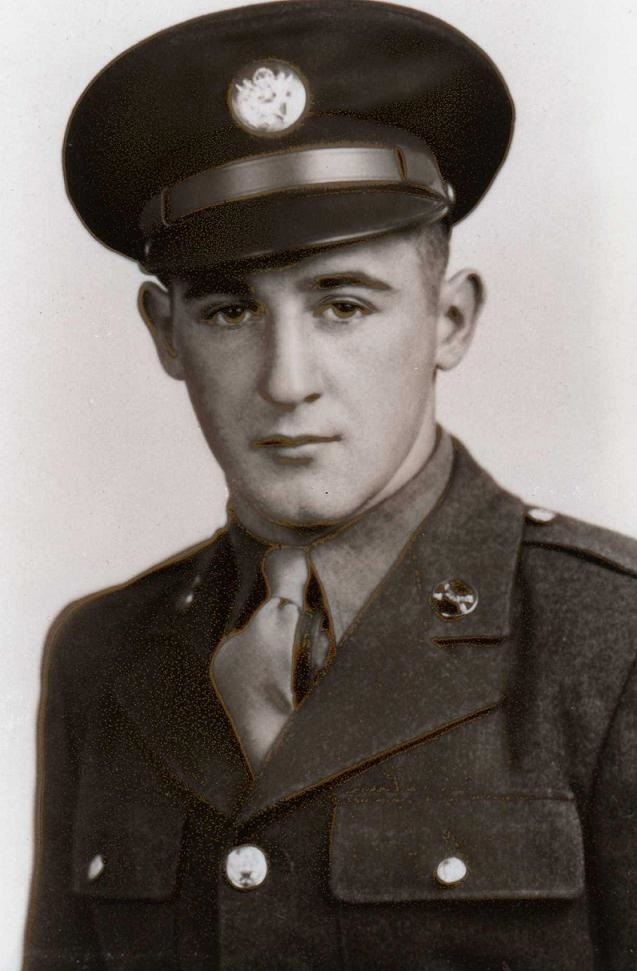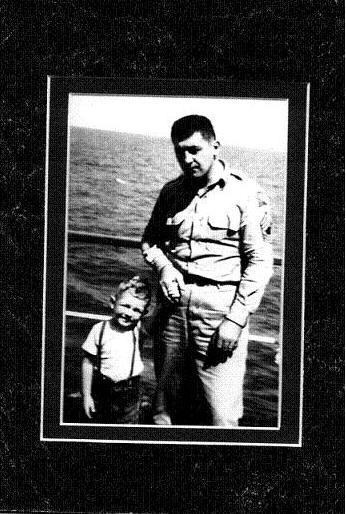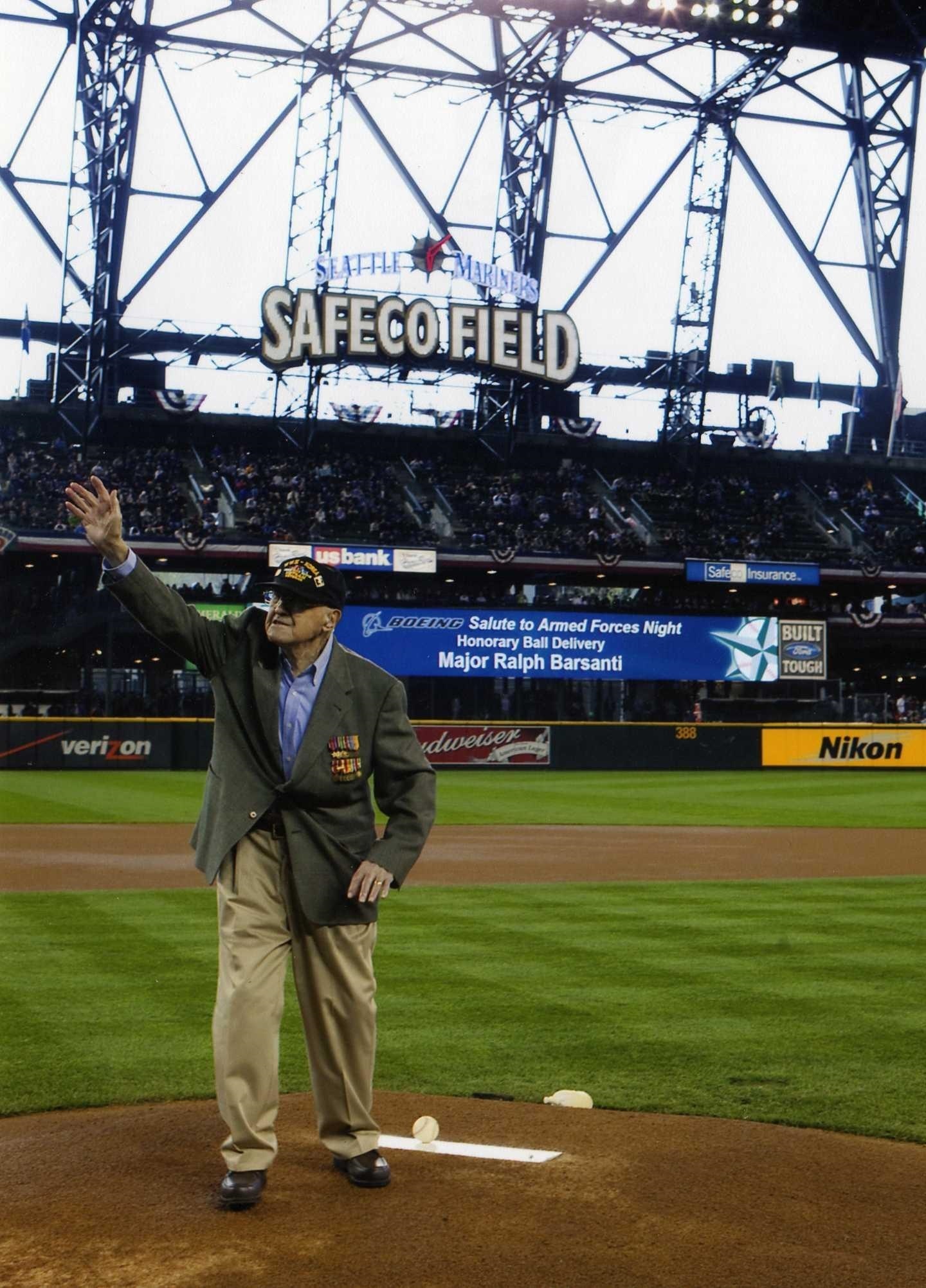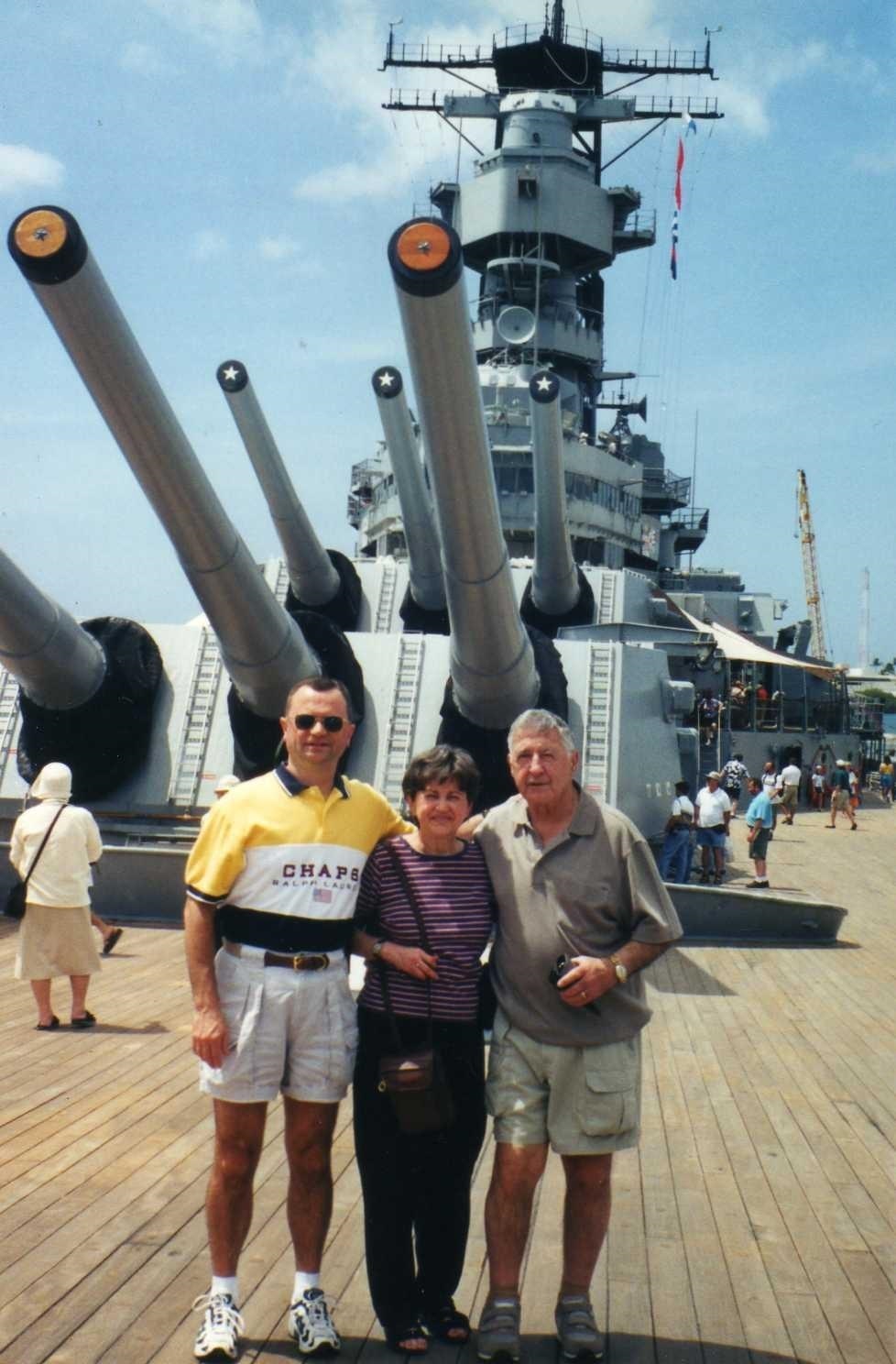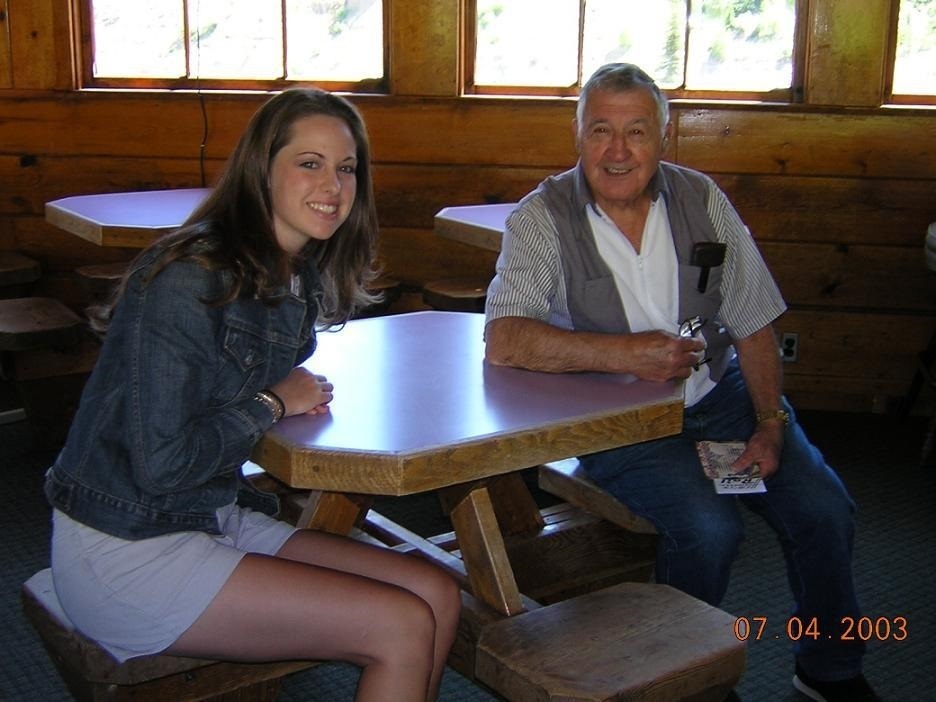|
|
|
|
|
RALPH L. BARSANTI (Military Service 1943-1971) Born June 6, 1925 in Butte, Ralph Barsanti enlisted into the U.S. Army after graduating from Butte, MT. in September of 1943. After basic training Ralph was assigned to the 129th Field Artillery Battalion. He was deployed to the Pacific Theater training in New Caledonia, New Hebrides in these staging areas getting ready for "General MacArthur's Island Hopping Campaign." General Douglas MacArthur as Supreme Commander in the South West Pacific Area led the Allied forces. MacArthur was based in Melbourne, Brisbane. The Western New Guinea campaign was a series of actions in the New Guinea campaign of World War II. United States and Australian forces assaulted Japanese bases and positions in the north-west coastal areas of Netherlands New Guinea and adjoining parts of the Australian Territory of New Guinea. The campaign began with Operations Reckless and Persecution, which were amphibious landings by the U.S. I Corps at Hollandia and Aitape on April 22, 1944. Next Ralph was involved in General MacArthur's assault to take back the Philippines. Ralph was next involved in the Assault of Luzon. The assault on Luzon was launched, as planned, on 9 January 1945, code named S-day. The landings at the Lingayen Gulf on 9 January were carried out by the US Sixth Army under the command of General Walter Krueger. Approximately 175,000 troops from the Sixth Army landed along the twenty-mile beach head within a few days, while the I Corps protected their flanks. XIV Corps under General Oscar Griswold then advanced south towards Manila. A few weeks later General MacArthur announced the imminent recapture of Manila. Ralph was on a ship (LST) just off Okinawa when the Japanese Surrender occurred on September 2, 1945 and his unit was the first unit to be shipped to Korea in that small LST during a Typhoon to disarm Japanese soldiers who had invaded and occupied the Korean Peninsula. In 1946 Ralph took a break in Service to return home to Butte, MT and reentered the Army by reenlisting in 1947 and rejoined General MacArthur Command and was assigned to General MacArthur's Staff (GHQ). As a Master Sergeant in the staff Ralph worked in the Government Section responsible for setting up the Japanese Constitution the same as the U.S. Constitution, which are the current laws the Japanese follow today. All bills and laws were sent to the Japanese Congress, but first had to have the approval of the Supreme Commander (MacArthur). Ralph's boss Major General Whitney would personally take each bill or laws to General MacArthur daily for his approval, before it went to the Japanese Congress. Whitney prior to WWII was General MacArthur's Civilian Lawyer. According to Ralph, General MacArthur would come to the Dai Ichi Building (HQ) daily arriving late in the morning around 1030, and would leave very late in the evening around 9-10pm, so the soldiers working for General MacArthur put in very long days, because they had to report very early in the morning for duty. Every morning the Japanese citizens would line the streets of Tokyo to see General MacArthur arrive at his HQs from where his residence was at the American Embassy all the way to the Dai Ichi building, because they saw General MacArthur almost as a God-like figure. Ralph returned to the United States in 1950, where he was assigned to the Montana Military District in Missoula, MT. and then later assigned to Fort Lawton, WA. In 1954 he was assigned to Berchtesgaden, Germany, where Hitler had the 'Eagles Nest' and was assigned as the Adjutant/Personal Officer, their office was Hitler's Summer Headquarters. Ralph lived in Haus Edda which was the house of Hermann Goering's daughter. Ralph was in Berchtesgaden when the German High Court issued Adolf Hitler's death Certificate. The building where he worked also had an underground bunker to house a Battalion of Hitler's SS guards. Completely air-conditioned, self-contained with its own generator plant, stuccoed inside. There was a VIP house attached for visiting dignitaries. Ralph and his soldiers would prepare for President Eisenhower's, Secretary of Treasury and many Congressmen who would come to attend the Salzburg Mozart festival every year. Like all military soldiers, Ralph was reassigned and returned to the United States. He was stationed at Fort Sam Houston in the 4th Army Headquarters and then a follow-on assignment to Fort Wainwright, Alaska in 1961. He then was assigned to the New Orleans, LA at the U.S. Army Terminal until he was then assigned to Vietnam in 1964-65. In Vietnam Ralph was assigned to the Army Concept Team which flew approximately 150 missions to track the Viet Cong and NVA Regulars. Many of President Lyndon B. Johnson's advisers among them General Maxwell D. Taylor, who was appointed Ambassador to Saigon in mid-1964, believed that a carefully calibrated air campaign would be the most effective means of exerting pressure against the North and, at the same time, the method least likely to provoke intervention by China. Taylor thought conventional Army ground forces ill-suited to engage in day-to-day counter insurgency operations against the Viet Cong in hamlets and villages. Ground forces might, however, be used to protect vital air bases in the South and to repel any North Vietnamese attack across the demilitarized zone, which separated North from South Vietnam. Together, a more vigorous counterinsurgency effort in the South and military pressure against the North might buy time for Saigon to put its political house in order, boost flagging military and civilian morale, and strengthen its military. Ralph flew in over 150 combat missions and conducted these missions as the door gunner in the Huey aircraft. The missions included testing the use of flares over search-lights in order to find Viet Cong movement below and also conducted defoliation missions over different parts of the jungles. After Vietnam, Ralph was assigned to the Cold Weather Mountain Warfare School, at Fort Greely, Alaska. Later in 1969, he was then assigned overseas, promoted to Major and became the Commanding Officer of the 199thPersonnel Service Company responsible for assigning soldiers to units throughout U.S. units in Korea including an Elite Military Police Unit at Panmunjom. As Commanding Officer, 199thhis company consisted of over 235 officers, Warrant Officers and Enlisted men. His company had responsibility for all personnel records of all the units in Korea except the 2d Division. During two occasions Ralph participated and sat in two low level meetings at the table in Panmunjom (the line separating North & South Korea) between U.S. South and North Korean Officers during negotiations. (Ralph's comment, "At the table the North Korean flag is taller because they insisted that their flag be higher than the American Flag, because their culture is to look down on everyone else."). After Korea, Ralph returned back to the United States and was assigned to the US Army Personnel Center from which he subsequently retired on Dec 31, 1971. Ralph's Medals received during his military service: Bronze Star (2 Awards), Air Medal, Army Commendation Medal (3 awards), Good Conduct Medal (2 Awards for enlisted service). Occupation Medal, Japan, Korea & Germany, American Theater Ribbon, Asiatic Pacific (Luzon) (1 Campaign Star), WWII Victory Medal, National Defense Medal (2 awards), Armed Forces Service Medal, Korean Service Medal, Vietnam Service Medal (2 Campaign Stars), Philippine Liberation Medal, Philippine Presidential Citation. |
%20copy.jpg)
